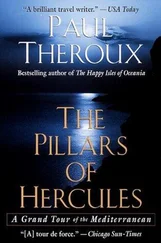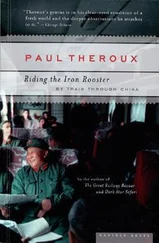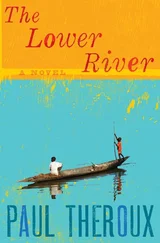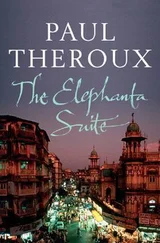I was prepared for a life of travel food by the cold lumpy oatmeal my mother served me on winter mornings. "You can't go to school until you finish it!" Tears of disgust sprang to my eyes as I sat, repelled by the sight, and I retched when I tried to swallow even a little bit. My Italian grandmother, who immigrated to America when she was a small girl, served us familiar-looking greens in salad, and when we asked about these slightly bitter leaves, she admitted that they were dandelions (soffione) she had dug up that morning. Many hard-up Italians in America foraged for dandelions.
"Objectively, nothing's more disgusting than eating milk or cheese," my son Marcel said to me one day when we were discussing this subject. Most Chinese agree, but nearly all are physically unable to digest the stuff, being lactose intolerant. (Many Chinese believe that the so-called white race has an odd cheesy smell.) The writer and traveler Ted Hoagland told me, "My exotic foods include bobcat, porcupine liver, and squirrel, but muskrat was the best." And my traveling friend Larry Mill-man has eaten dogs from Greenland to Micronesia, and remarked on the varieties of canine cuisine.
Sir John Mandeville's Travels is full of strange meals; the book was hugely popular for the culinary oddities it described. Given that Mandeville probably did not exist, and that his book was probably plagiarized, embellished with mostly outrageous lies and self-serving distortions, hardly mattered to a reading public eager for details of weird meals. Herman Melville must have been keenly aware of this fascination for exotic food when he included "The Whale as a Dish" as a chapter in Moby-Dick. In it, Ishmael discusses the cooking and eating of whale meat, as well as strips of fried blubber ("fritters") and the sperm whale's brains. As an aside, he adds that the whale is "a noble dish, were there not so much of him, but when you come to sit down before a meat pie one hundred feet long, it takes away your appetite."
The Japanese have gone to enormous lengths to continue killing whales so that they can dine on whale sashimi. Kujira (whale) is thinly sliced and served raw. The meat is marbled, looks like beef, has a briny, somewhat fishy taste, and can be tough. In order to go on hunting whales the Japanese have bribed Third World countries with development aid, to get them on their side, and have hidden behind their own indigenous people, the Ainu, who are otherwise despised for being primitive. The slaughter and eating of bottle-nosed dolphins is another Japanese pleasure. When this was revealed in a prize-winning documentary, The Cove, released in 2009, the mayor of the fishing village of Taiji, offended by the way his village was portrayed in the dolphin massacre, issued a statement saying that it was "important to respect and understand regional food cultures, which are based on traditions with long histories."
Other travelers sing the praises of balut, duck embryo, eaten in the Philippines; Thai duck-tongue soup; and finanziera, cockscomb stew, of the Italian Piedmont. Lutefisk, mocked by W. H. Auden in his travels in Iceland, is beloved there, along with hakuri, the putrefied shark. In Sicily and Sardinia you might be offered "maggot cheese," known as casu marzu, which you could mistake for squirmy rice. The dusky big-assed ant of the Colombian Amazon (hormigas culonas de Santander) is harvested by the indigenous Guane people and toasted and served as a "nutty snack." Korea is full of culinary specialties, besides dog: dalk bal is deep-fried chicken anus, and at the raw bar saeng nakji are octopus tentacles, simply prepared: a small, live octopus is knifed apart, each tentacle chopped off and, still wiggling, eaten raw, with a special sauce. Bull's testicles (criadillas) are standard fare in Spain, and lark pâté (pâté d'alouettes ) is a popular spread in France. Caterpillar fungus (yartsa gunbu), an inch-long larva with a two-inch fungoid growth on its head, is a gustatory marvel, with medicinal properties, found in Bhutan, Tibet, and Nepal. Black-ant larvae (escamoles) are a part of the combination plate in parts of Mexico. And last, bear paw, which I was offered in Harbin, in Heilungjiang province. From the Ming Dynasty onward, cooked bear paw has been on the menu all over China. A widely advertised specialty, it is an "imperial tonic food" that supposedly enhances virility, like rhino horn and tiger's penis, also eaten when poachers are successful.
None of these, and nothing I have eaten in travel, can compare in revolting looks or taste with a meal I attempted one day in Glasgow. I ordered a hamburger and was treated to the sight of a man forming a mass of raw meat and gristle into a billiard-size ball, which he tossed into a wire basket and lowered into a frothy container of boiling yellow fat. After he deep-fried this now smaller and black-crusted ball, he clamped it between two pieces of bread and handed it over. He smiled when I said I couldn't eat it: "You Yanks."
The Eating Habits of the Tartars
And they eat hounds, lions, leopards, mares and foals, asses, rats and mice and all manner of beasts, great and small, save only swine and beasts that were defended by the old law. And they eat all the beasts without and within, without casting away of anything, save only the filth. And they eat but little bread, but if it be in courts of great lords. And they have not in many places, neither pease ne beans ne none other pottages but the broth of the flesh. For little eat they anything but flesh and the broth. And when they have eaten, they wipe their hands upon their skirts; for they use no napery ne towels.
— The Travels of Sir John Mandeville,
first English translation, early fifteenth century
Strange Fruit of the Asian Kingdom of Caldilhe
And there groweth a manner of fruit, as though it were gourds. And when they be ripe, men cut them a-two, and men find within a little beast, in flesh, in bone, and blood, as though it were a little lamb without wool. And men eat both the fruit and the beast. And that is a great marvel. Of that fruit I have eaten, although it were wonderful, but that I know well that God is marvellous in his works.
— The Travels of Sir John Mandeville
Tartar Traveling Cuisine
When going on a long expedition, [the Tartars] carry no baggage with them. They each carry two leather flasks to hold the milk they drink and a small pot for cooking meat… In case of need, they will ride a good ten days' journey without provisions and without making a fire, living only on the blood of their horses; for every rider pierces a vein of his horse and drinks the blood. They also have their dried milk, which is solid like paste; and this is how they dry it. First they bring the milk to the boil. At the appropriate moment they skim off the cream that floats on the surface and put it into another vessel to be made into butter, because so long as it remained the milk could not be dried. Then they stand the milk in the sun and leave it to dry. When they are going on an expedition, they take about ten pounds of this milk; and every morning they take out about half a pound of it and put it in a small leather flask, shaped like a gourd, with as much water as they please. Then, while they ride, the milk in the flask dissolves into a fluid, which they drink. And this is their breakfast.
— The Travels of Marco Polo, translated by Ronald Latham (1958)
A Morning Skalk in the Hebrides
Their fowls are not like those plumped for sale by the poulterers of London, but they are as good as other places commonly afford, except that the geese, by feeding in the sea, have universally a fishy rankness.
Читать дальше












